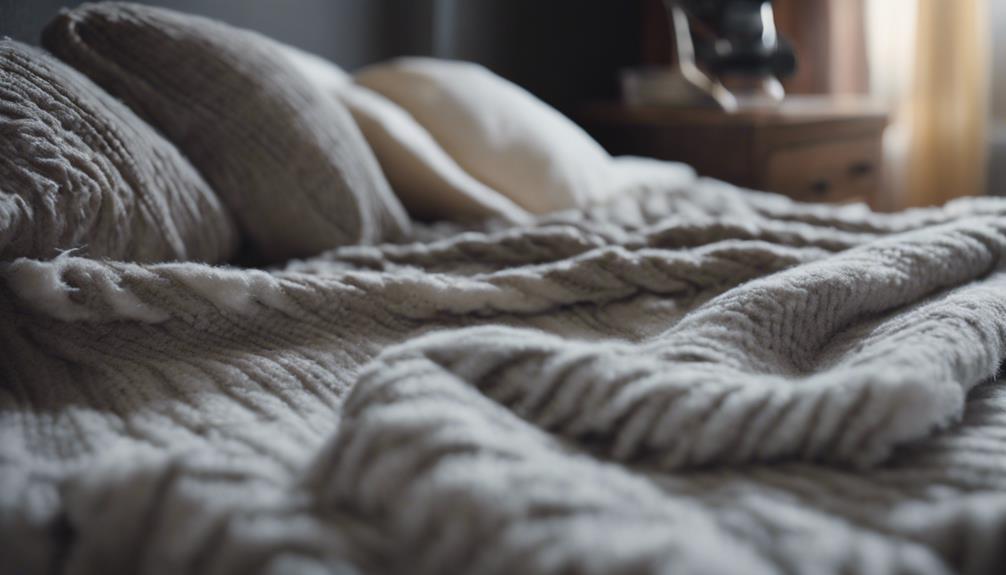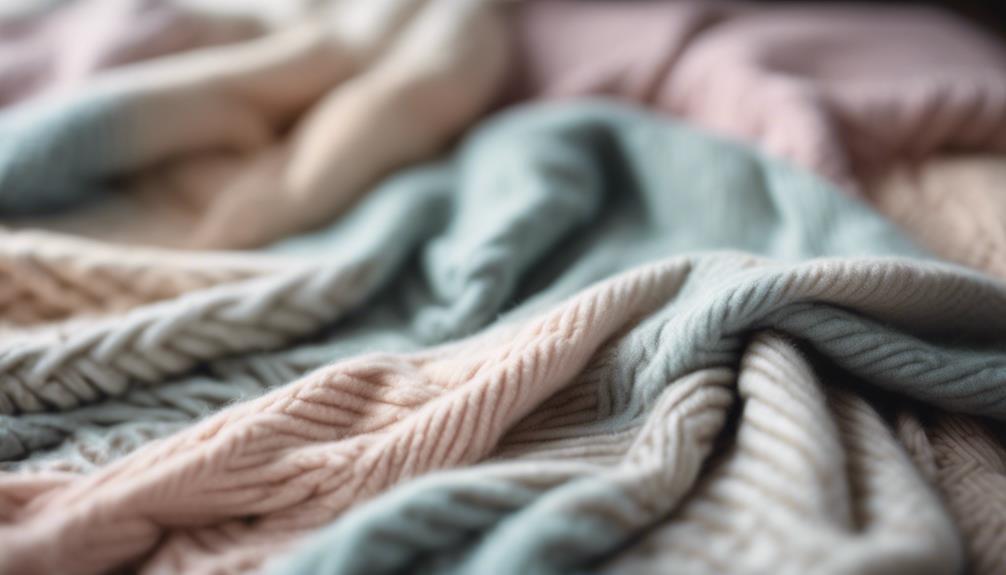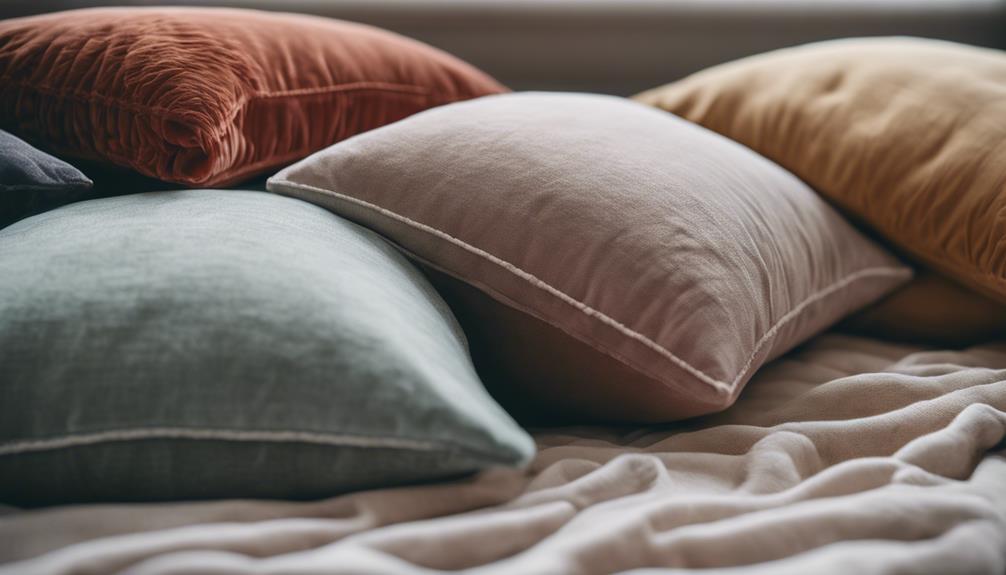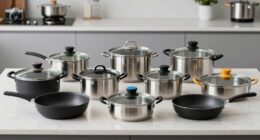To calculate the expense of operating an electric blanket, you need to consider factors such as wattage, usage time, and electricity rates. Higher wattage results in higher costs. To determine the cost, multiply the wattage by the hours of use and the electricity rate. Energy-efficient blankets can help you keep costs in check. The wattage of blankets typically ranges from 50 to 200 watts, impacting the overall expenses. For instance, running a 100-watt blanket for 10 hours may cost approximately 10 cents. Monitoring the wattage and usage can help you control costs. Adjusting the settings and keeping track of the usage can assist in managing energy consumption. Striking a balance between warmth and cost efficiency is crucial. Exploring energy-saving options can lead to savings in the long run. Having a good grasp of these factors can help you optimize the use of your electric blanket.
Key Takeaways
- Wattage and usage duration determine running costs.
- Calculate hourly cost by multiplying wattage and electricity rate.
- Energy-saving features help manage overall expenses.
- Track daily operating hours to estimate running costs.
- Opt for energy-efficient throws for cost-effective warmth.
Factors Affecting Electric Throw Running Costs

When considering the cost of running an electric throw, the wattage of the device plays an important role in determining the overall expenses. A higher wattage electric blanket will consume more electricity, leading to increased running costs compared to a lower wattage model.
To calculate the running cost of an electric throw, one needs to multiply the wattage by the number of hours the blanket is used and the electricity rate. Opting for an electric throw with energy-saving features or adjustable settings can help manage running costs effectively by controlling the amount of energy used for heating.
Understanding the wattage of the electric throw is essential for accurately estimating the expenses associated with using it. By being mindful of the wattage and selecting a throw with energy-saving capabilities, one can enjoy the warmth and comfort provided by the blanket while keeping running costs under control.
Understanding Electric Throw Wattage
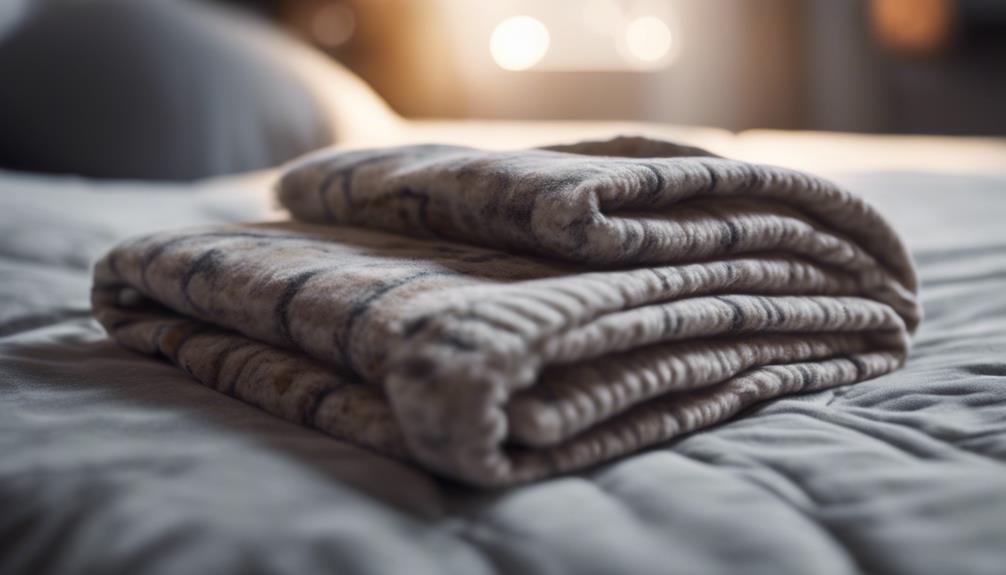
Understanding the wattage of an electric throw is vital for accurately estimating and managing its running costs efficiently. Electric throw wattage typically varies between 50 to 200 watts, depending on the size and heating capacity.
Larger electric throws with higher wattage may incur higher running costs compared to smaller ones. To estimate daily or monthly running costs, it's imperative to take into account the wattage of your electric throw.
Monitoring the usage time and wattage of the electric throw can help in managing electricity expenses effectively. For instance, running a 100-watt electric throw for 10 hours may only cost around 10 cents in electricity.
Calculating Electric Throw Hourly Usage Cost
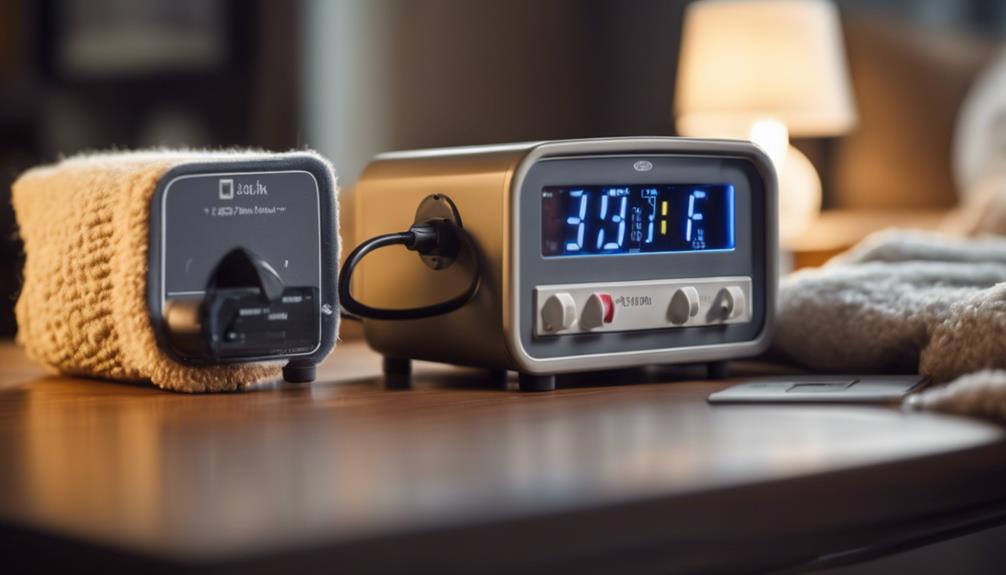
To accurately determine the hourly cost of running an electric throw, multiply its wattage by the electricity rate per kilowatt-hour. Understanding these key components is important for estimating the running cost of an electric throw effectively.
Here are some essential points to keep in mind:
- Calculate Cost: Wattage multiplied by the electricity rate per kilowatt-hour gives the hourly cost of running the electric throw.
- Keep in Mind Usage Duration: The longer the electric throw is in use, the higher the hourly cost will be.
- Compare Running Costs: Contrasting the running costs of different electric throws can help you find the most cost-effective option for personal use.
- Ensure Efficiency: Knowing the wattage of the electric throw and how long it will be used can assist in managing costs efficiently.
Managing Electric Throw Energy Consumption
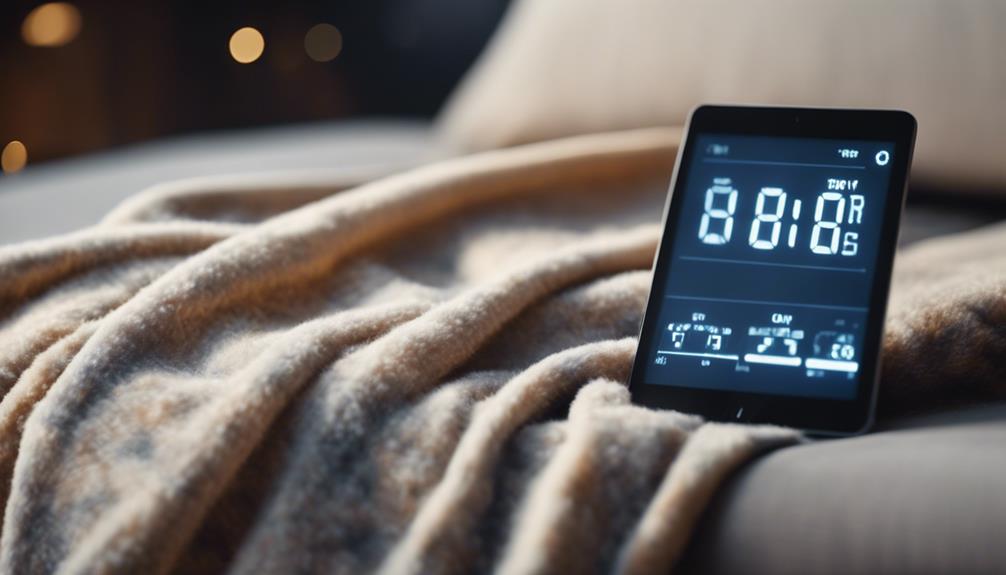
To effectively manage the energy consumption of an electric throw, consider adjusting heating settings and monitoring usage patterns. Understanding the wattage and usage duration of the electric throw is vital. At around 150 watts per hour, these throws provide targeted warmth and comfort while being relatively energy-efficient.
By monitoring usage patterns and adjusting heating settings to optimize energy consumption, you can strike a balance between comfort and cost-efficiency. It's important to find the right balance to make sure you aren't overheating the room or wasting energy when the throw isn't in use. By fine-tuning the heating settings to achieve the desired level of warmth without excess, you can make the most of your electric throw while keeping energy costs down.
Regularly monitoring the usage patterns allows you to identify opportunities for further efficiency improvements, ultimately maximizing both comfort and energy savings.
Monitoring Electric Throw Use Frequency
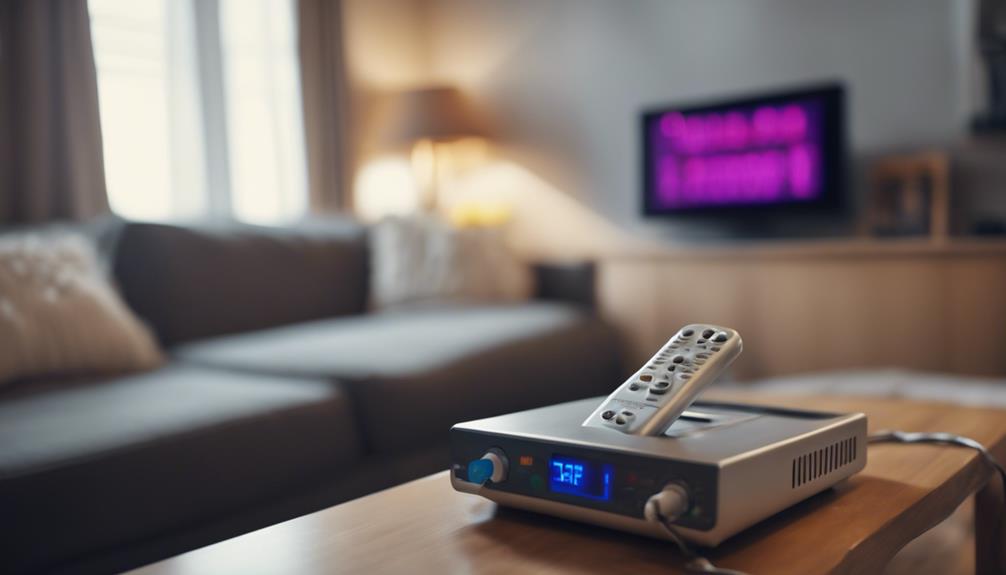
Keeping track of the hours the electric throw operates daily provides valuable insights into its energy consumption patterns. By monitoring the daily usage duration of the electric throw, we can better understand how much electricity it consumes and how this impacts the overall electricity bill.
Here are some key points to contemplate when monitoring the frequency of electric throw use:
- Tracking the number of hours the electric throw is in operation each day.
- Keeping a log of daily usage duration to understand electricity consumption patterns.
- Estimating the overall running costs of the electric throw by tracking the frequency of use.
- Gaining insights into the impact of electric throw usage on the electricity bill.
Understanding how often the electric throw is used can help in making informed decisions about heating options and energy efficiency. This monitoring process empowers users to manage their electric throw usage effectively and optimize energy consumption.
Exploring Energy-Efficient Electric Throw Options

When considering energy-efficient electric throw options, it's crucial to look for models that offer cost-effective heating solutions while being mindful of power consumption.
Energy-saving electric throws can provide warmth without greatly impacting your electricity bill, making them a practical choice for staying cozy on a budget.
Choosing a model that balances efficiency with comfort can lead to savings on heating costs in the long run.
Energy-Saving Electric Throws
Exploring energy-efficient electric throw options reveals cost-effective solutions for targeted warmth and comfort while minimizing electricity consumption. Some key features of energy-saving electric throws include:
- Adjustable heat settings: Modern electric throws come with options to tailor heat intensity, optimizing energy consumption.
- Minimal electricity usage: These throws typically consume 60-100 watts per hour, costing as little as 0.6 to 1 cent per hour to run.
- Savings on heating costs: Running an energy-efficient electric throw for 8 hours a day can cost as low as 5 to 8 cents, offering significant savings.
- Personalized comfort: These throws provide cozy warmth while allowing users to customize the heat settings for maximum comfort.
Cost-Effective Heating Solutions
Cost-effective heating solutions can be found through exploring energy-efficient electric throw options. When considering electric throws, factors such as wattage and usage duration play an important role in estimating running costs accurately.
Monitoring the heating settings and adjusting usage habits can greatly impact the overall energy consumption of electric throws. It's vital to compare the cost-effectiveness of electric throws, typically costing around 1.5 to 2.2 pence per hour, with alternative solutions like hot water bottles.
While electric throws offer convenience and consistent warmth, exploring other options may provide more economical heating choices. By understanding the energy-efficient features of electric throws and being mindful of usage patterns, individuals can make informed decisions to optimize both comfort and cost-effectiveness in their heating solutions.
Frequently Asked Questions
Do Electric Throws Use a Lot of Electricity?
Electric throws don't use a lot of electricity. They typically consume 100-150 watts per hour, resulting in a cost of 1.5 to 2.5 cents for an hour of operation.
These devices offer an affordable heating option compared to other alternatives. Understanding the wattage of an electric throw is key to accurately estimating running costs.
How Much Does It Cost to Run an Electric Throw per Hour?
We've discussed the cost efficiency of electric throws, highlighting their energy-efficient nature compared to other heating options.
Monitoring usage duration and wattage is key to estimating running costs accurately. By targeting heating with electric throws, one can save on energy bills. The cost typically ranges from 2 to 4 pence per hour, varying slightly based on wattage.
Understanding these factors can help make informed decisions for efficient and cost-effective heating solutions.
Do Electric Blankets Increase the Electric Bill?
Electric blankets are energy-efficient options that typically have a minimal impact on your electric bill. Their low energy consumption means that using them regularly results in only slight increases in monthly costs.
How Economical Is a Heated Throw?
Electric throws are a cost-effective heating option, consuming minimal electricity. They offer warmth at a fraction of the cost of traditional room heaters, which can be notably pricier to run.
Opting for an electric throw to heat only yourself can lead to lower energy consumption and reduced heating costs. Overall, electric throws provide an energy-efficient and budget-friendly solution for staying warm during colder months.
What Is the Average Cost of Running an Electric Throw?
The cost of running electric throws can vary depending on the wattage of the throw and the local electricity rates. On average, running an electric throw for 8 hours a day can add around $5 to $15 per month to your electricity bill. It’s important to consider this when purchasing an electric throw.
Conclusion
To sum up, the cost of running an electric throw can vary depending on factors such as wattage, usage frequency, and energy efficiency. By understanding these factors and managing your electric throw usage effectively, you can save on energy costs and enjoy the cozy warmth it provides.
Consider investing in an energy-efficient electric throw to further reduce your electricity expenses while staying comfortable during chilly nights. Make wise choices to keep your wallet happy and your home cozy.

